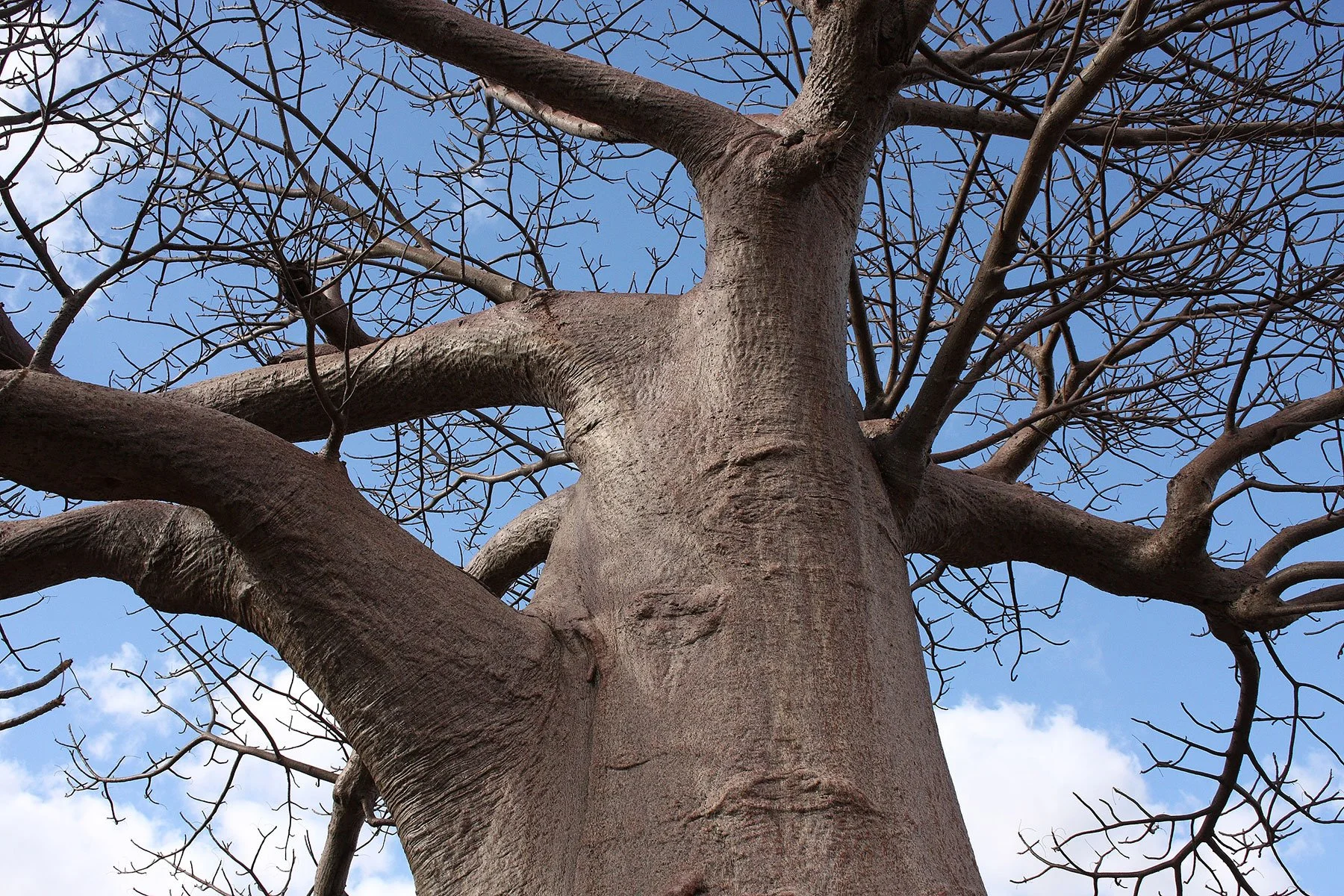Rise of the baobabs
Baobabs are one of the most iconic trees of the African savanna and have greeted humans traversing the landscape for thousands of years. These majestic trees are used extensively by people and animals for food and shelter. Unfortunately, over utilization and climate change is jeopardizing their future.
A recent comprehensive study, using cutting edge molecular and statistical analysis, has provided greater clarity on the origins of baobabs. This study was undertaken by Jun-Nan Wan from the Chinese Academy of Sciences, together with colleagues from Madagascar, Kenya, the United Kingdon and Denmark, and published in the journal Nature. Their key findings were that baobabs originated and diversified on the island of Madagascar and from there dispersed to north-western Australia and the mainland of Africa.
Baobabs are often referred to as ‘mother of the forests’.
The stem lineage (ancestral origins) of Adansonia has been dated at around 41,1 million years ago, long after the breakup of the Gondwanan land mass which now includes South America, Africa, India and Australasia, which took place around 160 million years ago. So, if baobabs originated in Madagascar, how did they spread to Africa and Australia?
The hypothesis presented in the Nature paper is that an ancestral seedbank made its way to western Australia via ocean drift from Madagascar giving rise to Adansonia gregorii, also known as the Australian bottle tree. The same may have happened with the African species Adansonia digitata, but there is some debate around a possible land bridge connecting Madagascar to Africa that may have aided dispersal to the African continent.
The massive stems store water and the bark and crevices are used as shelter by many animals.
It is noteworthy that the African species digitata is a tetraploid species having four sets of chromosomes whereas the Madagascan and Australian species have two sets of chromosomes (diploids). Polyploidy, including tetraploid plants, are generally found to be more adaptable and resilient to landscape and climatic changes and this may explain the vast distribution of the African baobab.
A leaf-covered baobab along the Zambezi River valley near Tete, Mozambique.
However, across their range, baobabs are still under threat, especially in Madagascar. Climate change has been identified as a major threat to baobabs. A study published in 2022 by Batsirai Chitungo, Tawanda Manyangadze and Shepard Ndlela in the African Journal of Ecology, using different climate models, showed a potential reduction in range of up to 50% for African baobabs in the future. Soil type was also shown to be an important attribute in the distribution of baobabs. Unfortunately, this paper has several minor typographical errors, but none-the-less provides some noteworthy recommendations on future conservation management of baobabs in Africa.
Another problem facing baobabs is that of overexploitation. Even in protected areas, baobabs are at risk due to extensive damage caused by having too many elephants. Repetitive stripping of the bark eventually leads to the tree dying. Outside of protected areas, slash and burn agriculture is practiced extensively, and although large trees may be spared, seedlings are often overlooked and have little chance of surviving to maturity.
A mighty baobab is no match against a man with an axe or bulldozer. Tete, Mozambique.
We need a collective effort to ensure the continued survival of these majestic trees which are so symbolic of the African savanna.
A little bit on taxonomy and species diversity…
Family Malvaceae Subfamily Bombacoideae
There are eight living species of baobab with six only found on the island of Madagascar and one in Australia and the other in Africa. A ninth species was described in 2012 called Adansonia kilima, but this species was later refuted in a detailed taxonomic analysis and placed in synonymy with Adansonia digitata in 2016 by Glynis Cron and colleagues from the University of the Witwatersrand.
Adansonia digitata – Africa (Not Assessed)
Adansonia grandidieri – Madagscar (Endangered)
Adansonia gregorii – north-western Australia (Least Concern)
Adansonia madagascariensis – Madagascar (Least Concern)
Adansonia perrieri – Madagascar (Critically Endangered)
Adansonia rubrostipa – Madagascar (Least Concern)
Adansonia saurezensis – Madagascar (Endangered)
Adansonia za – Madagascar (Least Concern)
References:
Chitungo, B., Manyangadze, T. & Ndlela, S. 2022. Potential effects of changes in climate, population density and land use land cover on spatial distribution of Adansonia digitata suitable habitats in Africa. African Journal of Ecology https://doi.10.1111/aje.13008
Cron, G. V. et al. 2016. One African baobab species or two? Synonymy of Adansonia kilima and A. digitata Taxon 65 (5): 1037–1049 http://dx.doi.org/10.12705/655.6
Wan, J-N. et al. 2024. The rise of baobab trees in Madagascar. Nature https://doi.org/10.1038/s41586-024-07447-4
Text and photographs: Warren R. Schmidt



